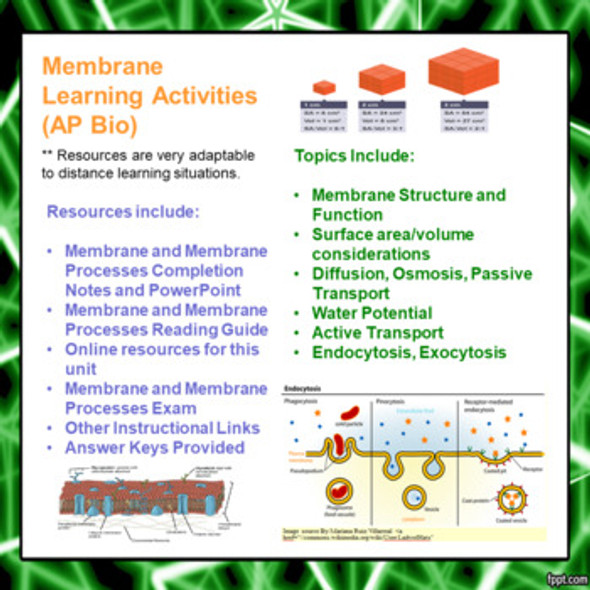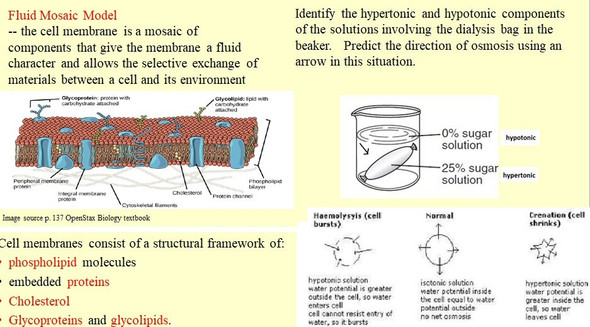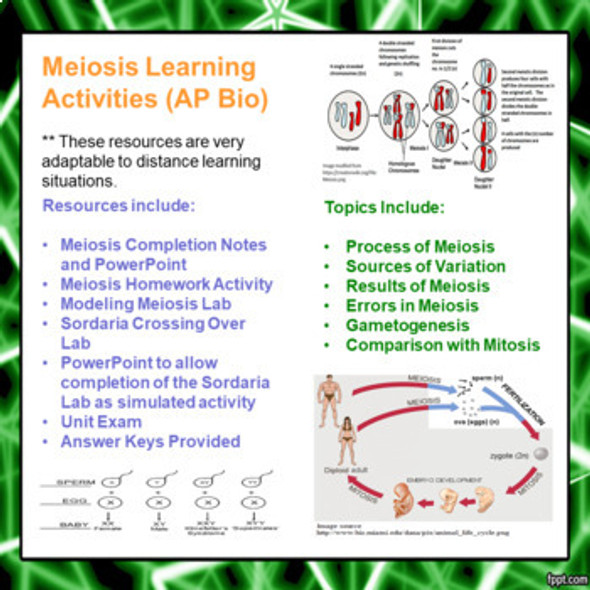Biodiversity and Aspects of Behavior Learning Activities for AP Biology (Distance Learning)
- Bulk Pricing:
- Buy in bulk and save
- Contributor:
- Monday's Rescue
- Grade Level:
- 9-12
- Product Type:
- Learning Package (Notes, PowerPoint, Homework)
- File Type:
- doc, pdf, ppt
- Pages:
- 36
- Answer Key:
- Yes
Description
This package of learning materials addresses topics taught in AP Biology or other upper level biology classes on the topics of Biodiversity, Threats to Biodiversity and Environmental Responses.. Some of the topics addressed pertaining to these topics include plant defenses against herbivory, animal communication, invasive species, regional and global threats to biodiversity, as well as many other topics. The specific learning objectives and standards are addressed at the end of the package description. This unit has been correlated to the AP Biology ETS, NGSS and Common Core learning standards.
All materials are may be modified by you to suit your needs and those of your students. Documents are available in both word and pdf format. Many of these materials may suitable for use in a flipped classroom.
The file contains 36 pages of student learning materials and a PowerPoint containing a total of 64 slides.
The answer keys to all activities (with the exception of the Invasive Species Project) are included.
The specific contents of the learning package includes the following items (the page count for these items are actual student handouts as answer key page counts are not included):
-- Learning Objectives for Students with correlations to the CollegeBoard/ETS, NGSS and Common Core Standards
(4 pp.)
-- Accompanying Completion Notes (12 pp)
-- PowerPoint to accompany the Completion Notes (64 slides)
-- Links to other online resources pertaining to these topics (labs and videos) (1 page)
-- Community Ecology and Biodiversity Exam with answer sheet (40 multiple choice and short answer questions)
(7 pp.)
-- Biodiversity and Threats to Biodiversity Worksheet (correlated with free online OpenStax Biology 2nd edition textbook but may be used with any College Biology text) (35 short answer questions) (6 pp.) (34 questions)
-- Invasive Species Project (2 pp.)
-- Global Warming Activity (5 pp.)
ETS AP Biology Learning Objectives
Enduring Understandings
ENE-3 Timing and coordination of biological mechanisms involved in growth, reproduction, and homeostasis depend on organisms responding to environmental cues.
IST-5 Transmission of information results in changes within and between biological systems.
SYI-3 Naturally occurring diversity among and between components within biological systems affects interactions with the environment.
SYI-2 Competition and cooperation are important aspects of biological systems.
Learning Objectives
ENE-3.D Explain how the behavioral and/or physiological response of an organism is related to changes in internal or external environment.
IST-5.A Explain how the behavioral responses of organisms affect their overall fitness and may contribute to the success of the population.
SYI-3.F Describe the relationship between ecosystem diversity and its resilience to changes in the environment.
SYI-3.G Explain how the addition or removal of any component of an ecosystem will affect its overall short-term and long- term structure.
EVO-1.O Explain the interaction between the environment and random or preexisting variations in populations.
SYI 2.A Explain how invasive species affect ecosystem dynamics.
SYI 2.B Describe human activities that lead to changes in ecosystem structure and/ or dynamics.
SYI 2.C Explain how geological and meteorological activity leads to changes in ecosystem structure and/or dynamics.
Threats to Biodiversity and Aspects of Behavior Learning Goals (local)
Upon the completion of this unit the student will be able to:
1. define the term biodiversity.
2. recognize that the steady increase in human population has had a negative effect on biodiversity.
3. state some major causes and consequences of global warming.
4. state a major cause and some consequences of ozone depletion.
5. state some major causes and consequences of acid precipitation.
6. explain why increased biodiversity produces greater ecosystem stability.
7. state several examples of decreased biodiversity having a negative impact on populations.
8. list several examples of human activities producing decreased biodiversity.
9. define what is meant by a keystone species and discuss an example of this.
10. list several examples of invasive (introduced) species and explain why they are often more successful than the native species of an ecosystem.
11. discuss several examples through which organisms exchange information and behaviors in response to internal changes and external cues.
12. identify two signal behaviors in living things that increase their reproductive success.
13. discuss some ways animals use visual, audible, tactile, electrical and chemical signals to indicate dominance, find food, establish territory and ensure reproductive success.
14. describe some ways geological and meteorological events have influenced ecosystem structure.
15. explain the difference between taxis and kinesis and list an example of each.
16. define the term nocturnal.
17. relate the timing of flower opening to pollinator feeding habits.
18. define the terms tropism and phototropism.
19. discuss how auxins are involved in the phototropism response.
20. explain why phototropism is a positive adaptation in plants.
21. define the term photoperiodism.
22. state two reasons photoperiodism is important to flowering plants.
23. recognize organisms exchange information with each other in response to internal changes and external cues.
24. discuss some physical and chemical adaptations possessed by plants in response to herbivory
25. explain what is meant by nutrient exclusion in plants.
28. list examples of fight or flight responses in organisms when they are threatened.
27. list three different examples of signaling behaviors that enhance reproductive success in different species.
28. list several examples of cooperative behavior in animals.
Common Core State Standards Connections:
ELA/Literacy
RST.9-10.8 Assess the extent to which the reasoning and evidence in a text support the author’s claim or a recommendation for solving a scientific or technical problem.
RST.11-12.1 Cite specific textual evidence to support analysis of science and technical texts, attending to important distinctions the author makes and to any gaps or inconsistencies in the account.
RST.11-12.7 Integrate and evaluate multiple sources of information presented in diverse formats and media (e.g., quantitative data, video, multimedia) in order to address a question or solve a problem.
RST.11-12.8 Evaluate the hypotheses, data, analysis, and conclusions in a science or technical text, verifying the data when possible and corroborating or challenging conclusions with other sources of information.
WHST.9-12.2 Write informative/explanatory texts, including the narration of historical events, scientific procedures/ experiments, or technical processes.
WHST.9-12.7 Conduct short as well as more sustained research projects to answer a question (including a self-generated question) or solve a problem; narrow or broaden the inquiry when appropriate; synthesize multiple sources on the subject, demonstrating understanding of the subject under investigation.
Mathematics
MP.2 Reason abstractly and quantitatively.
MP.4 Model with mathematics.
Terms of Use
Purchase of the product is for classroom use by the purchaser only. It is a violation for individuals, schools, and districts to redistribute, sell, or post this item on the Internet.
This work is licensed under a Creative Commons Attribution-NonCommercial-ShareAlike 4.0 International License
Please feel free to browse the other items in my store.














